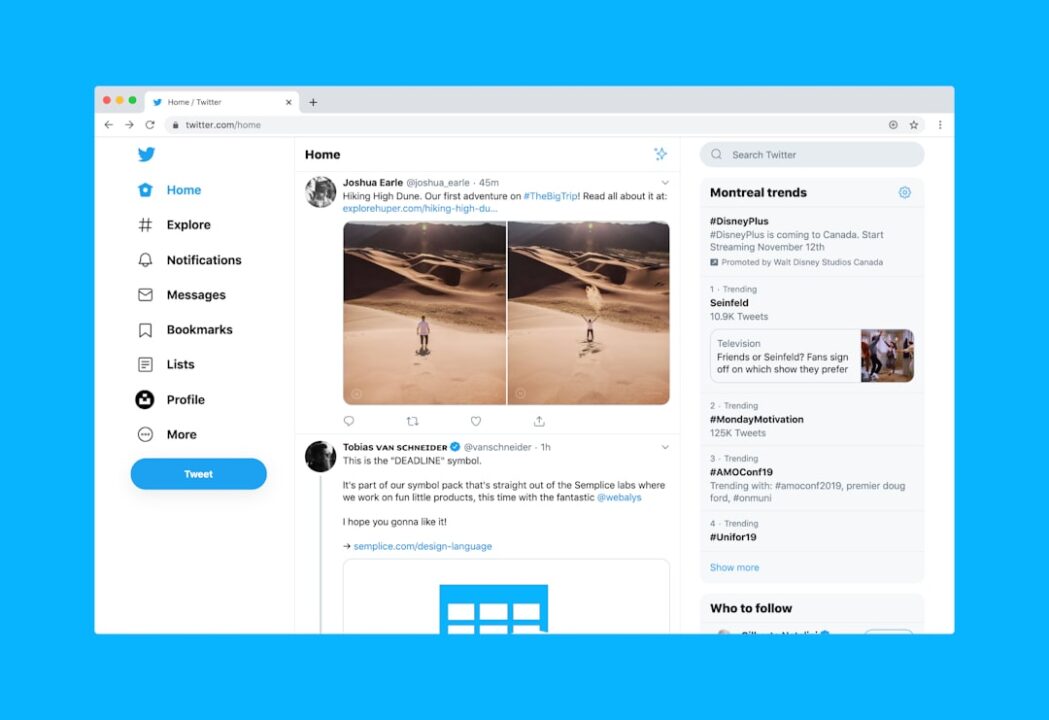|
IN SHORT
|
In a world where social networks play a major role in our lives, the choice between Instagram and Facebook can be crucial for the development of your social life. Each of these platforms offers distinct features and attracts varied audiences. Whether you are looking for a visual connection or a more diverse space for exchange, understanding the specifics of these two digital giants could help you determine which one best suits your needs and aspirations. Let’s explore together the advantages and particularities of Instagram and Facebook to make the choice best suited to your social lifestyle.
In the age of social media, choosing between Instagram and Facebook can seem confusing. Each of these platforms offers unique features that meet specific needs. This article guides you to determine which platform is best suited to your social life, by analyzing the different features, usability, and benefits they offer. We’ll explore typical use cases for each social network and give concrete examples of what they can bring to your daily life.
The popularity and audience of the platforms
Facebook has a larger and more diverse user base in terms of age and geographic location. Although often perceived as an aging platform, it remains a preferred choice for a large percentage of the world’s population. This demographic diversity means it’s a great tool for staying in touch with friends and family of all ages and from different corners of the world.
On the other hand, Instagram generally attracts a younger audience and is focused on sharing visual content. Instagram users are often more interested in aesthetics and lifestyle, making it an ideal platform for those who enjoy sharing and admiring artistic photos and short-form videos.
For more precise statistics, consult the social media figures can be very informative. This data can give you a clear idea of what types of users are on each platform and how they consume content.
Engagement and interactions
The commitment to Facebook manifests itself primarily through interactions such as « likes », comments and sharing of posts. Facebook groups are also very popular and allow you to build communities around common interests. Facebook Events make it easier to organize and participate in social activities.
For his part, Instagram is known for her likes, comments and direct messages (DMs). The platform strongly encourages interactions through Stories, Reels and IGTV. These features allow users to post ephemeral content, short-form videos, and longer-form formats, respectively, increasing engagement opportunities.
| Criteria | ||
| Target audience | Young and creative | Adults and families |
| Content type | Visual and artistic | Text and events |
| Interactivity | Stories and reels | Groups and events |
| Discovering new friends | Hashtags and explorations | Friends of friends and recommendations |
| Commitment | Quick likes and comments | Varied shares and reactions |
| Private life | More control over content | Numerous privacy options |
-
Instagram
- Dynamic and attractive visuals
- Best for sharing photos and videos
- Referent for trends and influencers
- Quick interactions via stories and reactions
- Younger and engaged community
- Dynamic and attractive visuals
- Best for sharing photos and videos
- Referent for trends and influencers
- Quick interactions via stories and reactions
- Younger and engaged community
-
Facebook
- Wide range of features (groups, events)
- Best for communication with friends and family
- Ideal for sharing articles and news
- Allows you to create events and get organized
- More varied target audience in terms of age
- Wide range of features (groups, events)
- Best for communication with friends and family
- Ideal for sharing articles and news
- Allows you to create events and get organized
- More varied target audience in terms of age
- Dynamic and attractive visuals
- Best for sharing photos and videos
- Referent for trends and influencers
- Quick interactions via stories and reactions
- Younger and engaged community
- Wide range of features (groups, events)
- Best for communication with friends and family
- Ideal for sharing articles and news
- Allows you to create events and get organized
- More varied target audience in terms of age
Features and Usability
On Facebook, you will find a multitude of features that aim to make interactions richer and more varied. Users can post text, photos, videos, links, and even create surveys. Facebook Marketplace and Facebook Watch are recent additions that further enrich the user experience. Facebook Stories also allow you to share moments of life in the form of ephemeral content.
Instagram, for its part, focuses on a more refined and visually oriented interface. Users can post photos, short videos, and use numerous filters and editing tools to beautify their posts. Stories, IGTV and Reels increase the options available for sharing content, making the platform particularly suitable for creatives and brands.
Content and data management
Know the social media management tools can significantly improve your use of both platforms. Tools like those presented on Hootsuite offer centralized management to plan and analyze your posts. They help maximize engagement by optimizing posting time and providing valuable insights about your audience.
In terms of privacy and data management, Facebook has often been criticized for its practices regarding personal data. Articles like the one found on TF1 Info highlight concerns surrounding data collection on Facebook. Instagram, owned by the same company (Meta), is not immune to these criticisms, but its focus on visuals may make these concerns less obvious to users.
Specific uses and practical applications
The use of Facebook can be very beneficial for those looking to develop communities centered around specific interests. Facebook groups allow users to share information, announcements and discussions in an organized way. Additionally, for businesses, Facebook remains an effective platform for marketing campaigns thanks to its advanced targeting capabilities.
Instagram, on the other hand, is perfect for influencers, creators and brands wanting to showcase products visually. Businesses can use Instagram ads to reach younger, more engaged audiences. Entrepreneurs and small businesses can leverage Instagram features to promote their products in an innovative way.
Ideal times to post
Know the best times to post on each platform can strongly impact the engagement of your publications. Studies, such as those found on Sprout Social, show that timing may vary depending on the platform and your specific audience. For example, the ideal times to post on Instagram may differ from those on Facebook due to the distinct usage habits of their users.
Impacts on mental health
Intensive use of social networks can have significant impacts on Mental Health. Surveys like those found on Noovo Me show that social comparison and the pressure to be constantly connected can lead to stress and anxiety. Facebook, with its news feed filled with announcements and status updates, can sometimes be overwhelming for some users.
Instagram, by focusing on the visual, can intensify feelings of FOMO (fear of missing out) and social comparison, especially among younger users. However, both platforms have taken steps to mitigate these effects, such as introducing digital wellbeing settings and the ability to limit notifications.
Measures to promote healthy use
For more balanced use, it is recommended to set time limits on each application and deactivate non-essential notifications. Use analysis tools, such as those available on Hootsuite, can help understand your online behavior and adjust your habits to reduce negative impacts.
Conclusion: What is the best platform for you?
Choose between Instagram And Facebook depends largely on your individual needs and preferences. If you prefer visual content and are looking to share moments in an aesthetic way, Instagram will probably be the best option. If you appreciate a more complete platform in terms of communication, with varied tools to connect with a large audience, Facebook might be better suited to you.
Both platforms offer unique benefits and can even complement each other in your digital social life. Carefully analyzing what each has to offer and how they fit into your lifestyle and priorities can help you get the most out of your online interactions.
A: Instagram is primarily focused on sharing photos and videos, while Facebook offers a broader experience with text posts, groups, events, and varied interactions.
A: Instagram is generally more popular with younger people compared to Facebook, which attracts an older audience.
A: Yes, Instagram promotes social interactions through comments, likes and direct messages, although it is more focused on visual content.
A: Yes, Facebook offers robust features for organizing and promoting events, making it more effective for these types of activities compared to Instagram.
A: Facebook makes it easier to find friends with its connect and suggestions features, while Instagram relies more on hashtags and discovery through content.
A: Yes, Instagram offers business tools like performance metrics and the ability to create a business account for businesses and content creators.
A: It depends on personal preference, but Instagram might be seen as more suited for personal visual content, while Facebook allows for more elaborate storytelling and more personal connections.





